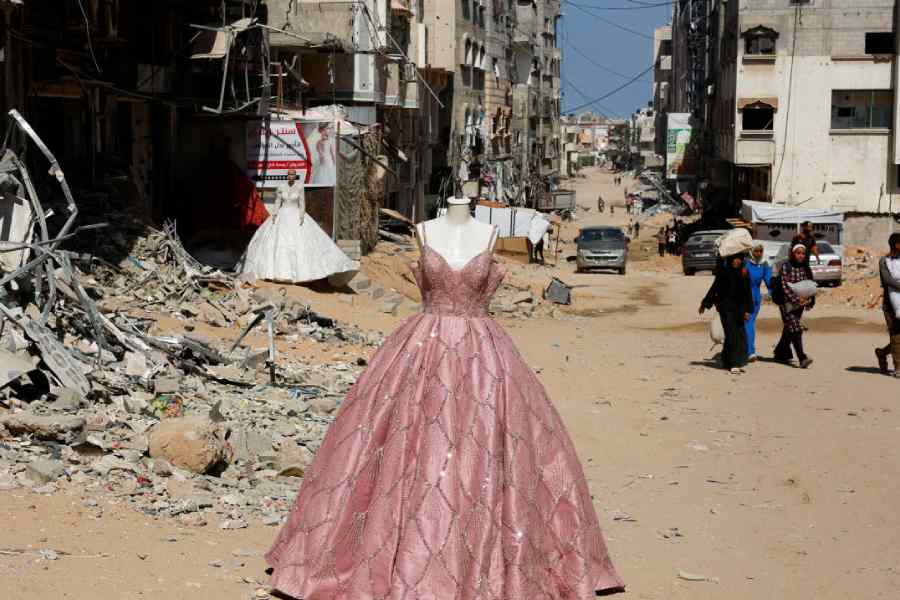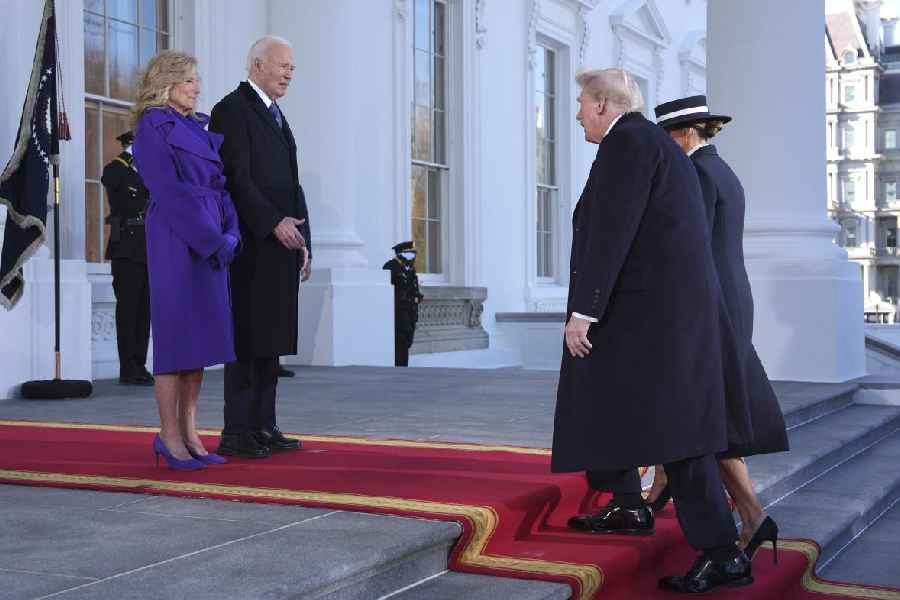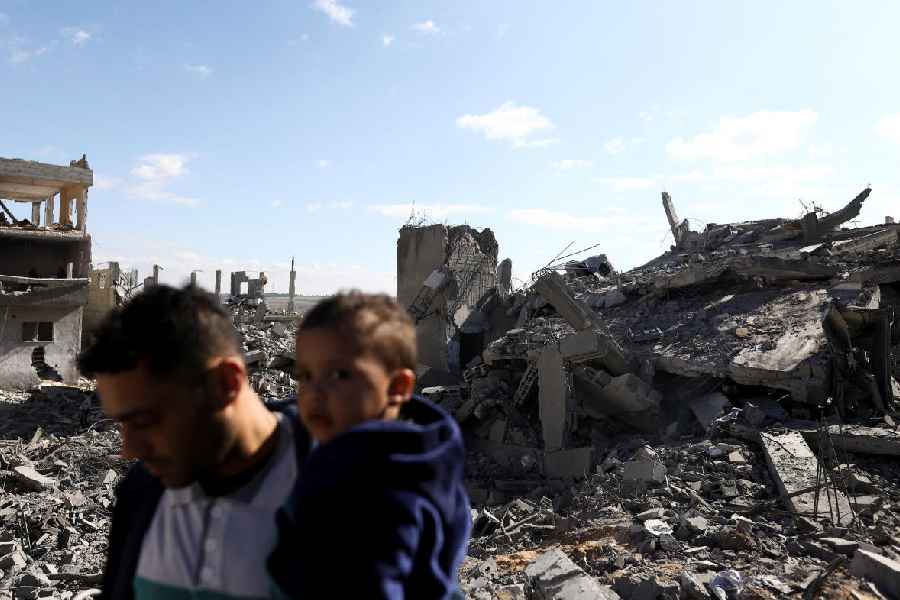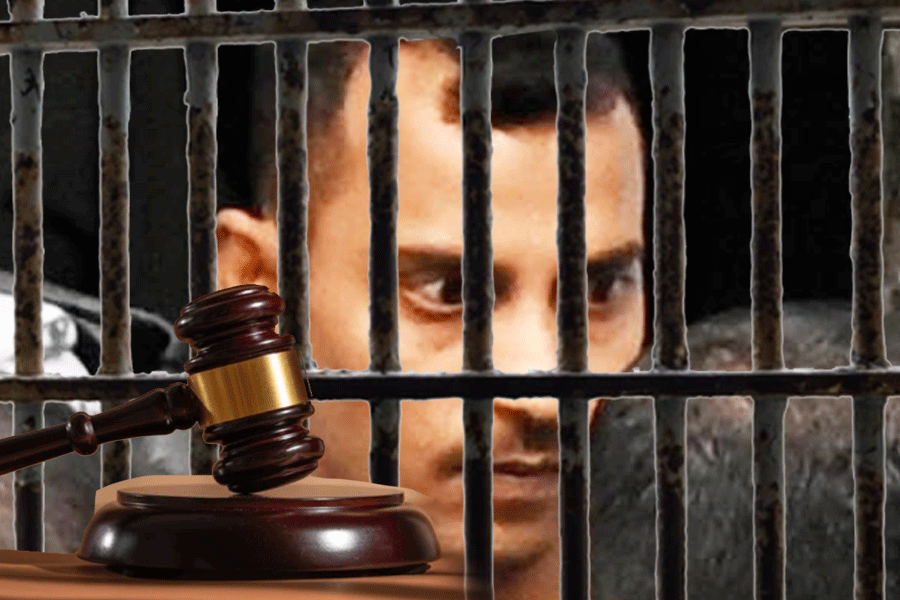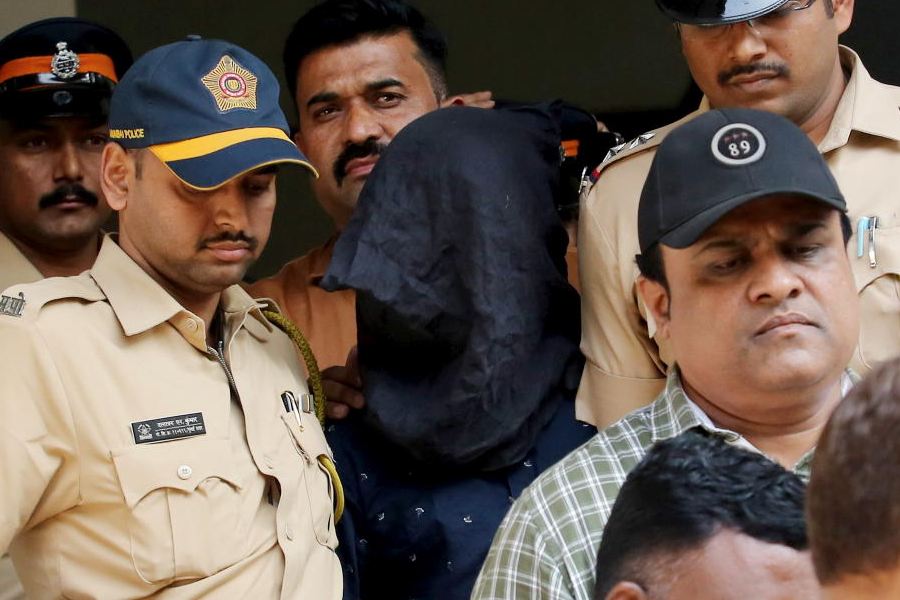Yaniv Hegyi, an Israeli community organiser, fled his home last October 7, after terrorists from Gaza overran his village in southern Israel. “I was sure that by January we would go back,” Hegyi said.
Mohammed Shakib Hassan, a Palestinian civil servant, fled his home on October 12, after the Israeli Air Force responded by striking his city in northern Gaza. “We thought it would be two months — at most,” Hassan said.
Instead, the war in Gaza has dragged on for a year, with no end in sight.
It is the longest war between Israelis and Arabs since the end of the conflict that set the boundaries of the Israeli state in 1949. It is also by far the deadliest. More than 1,500 Israelis have been killed, mostly during Hamas’s attack on October 7, and roughly 250 others were abducted. More than 40,000 Palestinians have been killed in Israel’s counterattack, which began with one of the most intense bombardments ever recorded in modern warfare.
A wider, multifront war between Israel and Hamas’s regional allies is now unfolding — most recently with Israel’s invasion of Lebanon and Iran’s bombardment of Israel — but the core of the conflict remains the original battle between Hamas and Israel, and the almost Sisyphean challenge of ending it.
Inside a deeply traumatised Israel, that conflict has magnified long-running social schisms and set off bitter debate about whether to prioritise Hamas’s destruction or a deal to free the hostages. Outside Israel, it has spurred horror at the Israeli military response to Hamas’s atrocities, accusations of genocide and war crimes, and widespread protests in the US and beyond.
The war in Gaza has also highlighted the limits of American influence, with the Biden administration unable or unwilling to exert the pressure needed to broker a truce. On the ground, it has displaced millions of people, mostly in Gaza but also in Israel.
Hegyi is living in a stranger’s house, 160km from his hometown, wary of returning to his half-ruined village while fighting flares nearby. Hassan is living in a tent in central Gaza, his third makeshift shelter since fleeing his now destroyed apartment nearly a year ago.
“We were optimistic that it would end by Ramzan. Then Eid. Then Eid al-Adha,” Hassan said, listing three important events in the Muslim calendar that fell in the first half of the year. Instead, he said, “Twelve months have passed in front of our eyes.”
By most military metrics, Israel has crushed Hamas, killing most of its leadership and many fighters, capturing most of its territory at one stage or another, seizing or destroying much of its arsenal and blocking the routes by which it might smuggle in new weapons.
Yet the war rumbles on, for several reasons but chiefly this: Israel’s government, led by Prime Minister Benjamin Netanyahu, has set itself an almost unreachable threshold for victory, while Hamas’s conception of winning revolves mainly around survival.
Israel wants to destroy Hamas’s leadership as well as free the roughly 100 hostages still held by the group. The first goal essentially precludes the second: Hamas’s surviving commanders in Gaza, led by Yahya Sinwar, are believed to be hiding alongside hostages, making it hard for Israeli soldiers to capture or kill them without harming their own citizens.
Hamas seeks mainly to survive the war as a movement, a modest goal that allows it to weather a level of destruction that might have caused others to surrender. In World War II, Japan surrendered after suffering widespread devastation while France did so to avoid such harm. Hamas has done neither, as its leaders attempt to set off a regional conflict that endangers Israel’s long-term future.
The war also continues because of the way each side is waging it. Hamas is fighting as a guerrilla force, hiding in a vast network of tunnels, making it hard for Israel to deal a decisive blow. And when Israel has seized parts of Gaza, it has in most cases given up those gains by refusing to hold the ground. The two men driving many of these dynamics are Netanyahu and Sinwar.
In Israel, Netanyahu’s grip on power relies on several far-Right lawmakers who have threatened to collapse his fragile coalition government if he ends the war without destroying Hamas. At least in part, that dependency has prevented Netanyahu from agreeing to a hostage-release deal.
In Gaza, it was Sinwar who oversaw plans for the raid that started the war. It is his tolerance for the ensuing destruction and large civilian death toll that has allowed Hamas to fight on even as much of Gaza lies in ruins and his top military commanders are dead. And it is his insistence on a permanent cease-fire, coupled with Netanyahu’s on a temporary one, that has prevented any truce.
Both sides appear to have decided that they will not go back to how things were before October 7. Hamas’s leaders have said the pre-war dynamic of endless Israeli occupation must be disrupted regardless of the human cost. Israel feels far more vulnerable after the deadliest day in its history and has decided it can no longer tolerate groups dedicated to its destruction on its borders.
“This war won’t end because nobody is willing to blink,” said Thomas R. Nides, the US ambassador to Israel until shortly before the October 7 attack. “In the meantime, everyone is losing — hostages and their families, innocent Palestinians, Israelis displaced from northern Israel, Lebanese civilians. And it’s truly tragic.”
Oct: A hidden enemy
The first sign that Israel might struggle to achieve a conventional military victory came in the hours after its forces invaded Gaza on October 27.
Israel sent more than 20,000 troops to capture Gaza City and its hinterland, accompanied by hundreds of tanks, after Israeli warplanes had spent nearly three weeks pounding Gaza with one of the deadliest aerial campaigns of the 21st century. In a traditional encounter on the battlefield, Israel’s invasion force would have swiftly devastated Hamas’s military wing.
Instead, Hamas’s fighters were nowhere to be seen. Their commanders appeared to have made a strategic decision to avoid giving Israel the chance to deliver a knockout blow.
Eitan Laub, an Israeli officer tasked with capturing a cluster of buildings close to the border, imagined that his battalion would face fierce resistance. To the soldiers’ astonishment, they captured the site around dawn on October 28 without encountering a single Hamas fighter.
“The entire battalion looked at those buildings, just leaned on their backpacks, pulled out cigarettes and smoked,” Laub told an Israeli podcast. “It was obvious that no one was left.”
“We know they’re here,” he remembered thinking. “But where are they?”
Gradually, it became clear. Hamas’s gunmen were largely hiding in a tunnel network, hundreds of kilometres long, that extended under homes, schools, hospitals and UN facilities. Wearing ordinary clothes that made it hard to distinguish them from civilians, the fighters would emerge suddenly from those tunnels to shoot at Israeli soldiers and attach mines to their tanks.
The result was a campaign of attrition. By hiding underground, Hamas was able to blunt much of Israel’s technological superiority, forcing it to expend considerable time searching for trapdoors, booby-traps and secret tunnels and exploding them.
As a result, the Israeli military had yet to capture key areas of Gaza City by the time the sides agreed to a brief cease-fire and hostage release deal, nearly a month later. Each day of the cease-fire, Israel released roughly 10 Palestinian prisoners for every hostage freed by Hamas.
Some of those hostages were handed over at a plaza at the heart of Gaza City. Through that approach, Hamas displayed how much control it still exerted there.
Nov: Sinwar’s shift
If there was a moment when it became clear the war would not end soon, it was the day that cease-fire collapsed in late November.
Until then, no one was sure how far Israel would advance or how long Hamas would hold out. Diplomats and negotiators assumed it would be possible to repeat the brief cease-fire, perhaps several times. The hope was that, sooner rather than later, one of those temporary truces might evolve into a permanent arrangement and end the war.
Sinwar’s furious reaction to the collapse of the first cease-fire ensured that it would not be repeated.
Hiding in his underground bunker, Sinwar had been delighted when the cease-fire started, believing that it marked the end of the war, less than two months after it began, according to Israeli officers who collect intelligence about Sinwar and senior officials from a country involved in the negotiations who were briefed on his reaction by Hamas leaders.
Sinwar believed he could keep dragging out the cease-fire by promising to release more hostages, which he thought might encourage the Israeli public to press their government to agree to an extension, according to the officials, who spoke on the condition of anonymity in order to speak more freely.
Instead, the truce broke down after Hamas said it could not locate several captured female soldiers that it had promised to release, and offered a handful of elderly civilians and a few bodies of dead Israelis instead, according to diplomats and Israeli officials familiar with the negotiations. Israel refused, assuming bad faith, and unwilling to set a precedent by giving up on the women. The truce collapsed, fighting resumed, and Israeli troops surged south towards Khan Younis, Sinwar’s hometown, where he was believed to be hiding.
After the truce ended and Sinwar realised his gambit had failed, he flew into a rage, according to the officials.
This was when Sinwar decided there would be not be another cease-fire unless it was permanent, according to diplomats from three countries involved in the negotiations and Israeli officials.
A day later, Sinwar’s deputy said in an interview that Hamas would not negotiate future hostage releases unless the war ended first.
His demand essentially meant that to end the war, Israel would either have to defeat Hamas on the battlefield or compromise at the negotiating table. Critics say that the US, which supplies much of Israel’s arsenal, failed to use its leverage to force Netanyahu to agree to a cease-fire, apart from suspending a single arms shipment for two months in May.
Israelis counter that the US, by criticising Netanyahu too often in public, unwittingly encouraged Hamas to hold out for more concessions on the false assumption that Israel had lost its benefactor’s support.
According to a senior Israeli official and a senior western diplomat briefed on US-Israel relations, there is truth in both claims: At key junctures in the negotiations, they said, America’s willingness to publicly criticise Netanyahu prompted Hamas to harden its positions, while the American reluctance to draw and enforce red lines in private meant that he felt little pressure to compromise.
March: Strategy lapse
Gunfire rattled overhead when two Times journalists arrived in late March at Al-Shifa hospital in Gaza City, the largest medical centre in the territory. As Israeli soldiers and Hamas fighters fought for control of the site, the ruined hospital was a jolting testament to the astonishing toll the war had taken on civilian life.
The facade was scorched with soot, punctured by scores of shells and bullets. The walls of the surgery department had been blown off — a reminder of both Hamas’s willingness to base its military operations within civilian institutions and Israel’s willingness to pursue them there, regardless of the consequences.
It was also a reminder of a flaw in Israel’s military strategy.
This was our second wartime visit to Al-Shifa; we also accompanied the Israeli military there after it first captured the site in November. In between, Israel had left the hospital, allowing Hamas to re-establish it as a nerve centre for its operations. To expel Hamas again, Israeli commandos returned in late March, setting off a 12-day battle that wrecked most of the buildings that had survived the first raid. This counterproductive pattern has been replicated in scores of places across Gaza throughout the war. In areas like Jabaliya, Shejaiya and Zeitoun, the Israeli military has returned — in some cases three times — to redo a job they thought they had already completed.
One reason is that the Israeli leadership does not yet want to take responsibility for the civilian management of Gaza. Occupation is expensive and logistically complex, even if it is an outcome sought by far-Right Israelis who want to establish small settlements in Gaza under the military’s protection. As a result, Israel’s leadership have decided, at least for now, against occupying land, except along two strategic thoroughfares.
A second reason is that Israel has refused to facilitate the emergence of an alternative Palestinian leadership that could fill the power vacuum in neighbourhoods where Hamas had temporarily been ousted.
The only realistic Palestinian alternative to Hamas is the Palestinian Authority, which ran Gaza until being overthrown by Hamas in 2007, still administers parts of the Israeli-occupied West Bank and still pays the salaries of thousands of Gazan civil servants, including medical workers.
Without formal approval from the political leadership, senior Israeli security officials allowed a group of their Palestinian Authority counterparts to enter Gaza in the spring, to try to rebuild the authority’s capacity on the ground, according to Western diplomats and a former senior Israeli official briefed on the move.
But the initiative failed, partly because Hamas opposed it and partly because it was not enacted at scale. Netanyahu has ruled out giving the authority a formal role, accusing it of corruption and incompetence, and wary of measures that would make a Palestinian state more likely.
July: Netanyahu’s no
If Sinwar was the biggest obstacle to a truce in December, by the end of July it was Netanyahu.
Through months of negotiations, both sides had begun to compromise on key issues and by early July a deal seemed within reach, according to officials from several countries involved in the talks.
Hamas had signalled a willingness to negotiate a framework that could allow for a cease-fire to end after six weeks, potentially satisfying Israel’s aim of avoiding a permanent arrangement.
Israel had agreed to withdraw from Gaza during a cease-fire and showed more flexibility on allowing displaced Palestinians to return to homes in northern Gaza, two concessions that pleased Hamas. At least 30 hostages would be released in exchange for hundreds of Palestinian prisoners, as well as a surge in humanitarian aid for millions of Gazans.
Then Netanyahu changed his mind. As mediators prepared to fly to Rome, hoping to finalise the deal at a summit on July 28, the Prime Minister instructed his negotiating team to make several new, last-minute demands, according to diplomats, Israeli officials and a copy of the demands reviewed by The Times. Reneging on previous understandings, Netanyahu now wanted Israel to retain control of Gaza’s southern border. And he sought to make it harder for Palestinians to move back north.
Hamas balked. The deal was off.
The reasons for Netanyahu’s U-turn are the subject of a bitter dispute in Israel. Netanyahu himself has said it was essential to retaincontrol of Gaza’s southern border with Egypt to prevent Hamas from smuggling in weapons.
Netanyahu’s critics accused him of introducing an obstacle to the deal to ensure his own political survival. Far-Right members of his coalition had threatened to bring the government down if Israel agreed to a truce that let Hamas remain in power.
In the eyes of his opponents, the Prime Minister had prioritised the far-Right’s interests over those of the hostages set to be released during a truce.
No end in sight
Whatever its cause, the failure to reach a truce has been catastrophic for civilians of all backgrounds.
As Israeli soldiers continued their advance, Hamas shot and killed six Israeli hostages, including three who would have been freed during the first phase of a cease-fire.
Thousands more Gazans have been killed since negotiations collapsed in July, amid a deepening humanitarian crisis.
The longer the war has continued, the more Israel’s social divides — which narrowed at the start of the war — have widened, accelerating an internal reckoning about what kind of country Israel wants to be.
A long-running argument about the role of the judiciary, the character of the state, and the relevance of minority rights has gradually resurfaced, particularly after far-Right Israelis rioted in support of soldiers accused of raping a Palestinian detainee.
And now, with Gaza stuck, Israel has turned its attention to Hamas’s allies across the region. It has invaded Lebanon in pursuit of Hezbollah, after assassinating its leader, Hassan Nasrallah, and threatened a potentially devastating confrontation with Iran, Hamas’s sponsor, which last week struck Israel with a barrage of ballistic missiles.
After a year in the headlines, the Gaza war has suddenly been overshadowed by the wider conflict that it helped precipitate and that has now taken on a logic of its own. With all sides vowing to escalate, it is unclear when or how any of this can stop.
In the meantime, the millions of Israelis and Palestinians whose lives were upended last October 7 have been left in an unending state of limbo — traumatised, bereaved and, like Hegyi and Hassan, often displaced.
“I didn’t think it would last this long,” Hegyi said.
“And I don’t know when it will end.”
New York Times News Service

